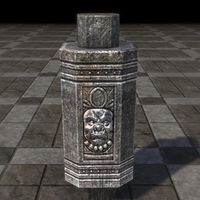|
The Fat Mother was one of the Four Parents of certain Nedic tribes of the Deathlands. In Nedic mythology, the People have four parents: the great Dragon of Time, the Mother Serpent, the Fat Mother, and the Ox. The Fat Mother was revered as the parent who nourished and saved the People when they were lost and starving.[1]
According to the Nedic legends before the People took to harvesting, they relied solely on the meat of wild beasts for sustenance. One day, when the hunters went out to hunt, they could not find any wild beasts to kill. The chief of the People announced that they had killed all the beasts and must leave to find more elsewhere. The People packed their belongings and began to wander in search of food. One of these wanderers was named Orsa, who was shunned by the People because of her appearance.
The People were starving and needed to climb a mountain, cross a river, and cross a desert. Orsa, who was shunned by the People, offered her breasts to feed them so they could survive. Despite her kindness, the People treated her poorly. Orsa prayed to the stars for help, and they transformed her into a bee. The People learned to eat honey from her hive, but Orsa still remembered her promise and would sting them if they treated her poorly. She was remembered as the Fat Mother. Generations after this event, the Nedic children were still asking for honey from the Fat Mother.[2]
The imagery of four distinct beings was present in Nedic ruins - dragon, oxen skull, a pair of serpents and a full face but it is unknown if they depicted the Four Parents.[3][4]
See AlsoEdit
BooksEdit
- Tales of Abba Arl: The Fat Mother by Abba Arl — A children's tale of Orsa
- Tales of Abba Arl: The Ox's Tale by Abba Arl — A children's tale surrounding the Ox, one of the four parents
